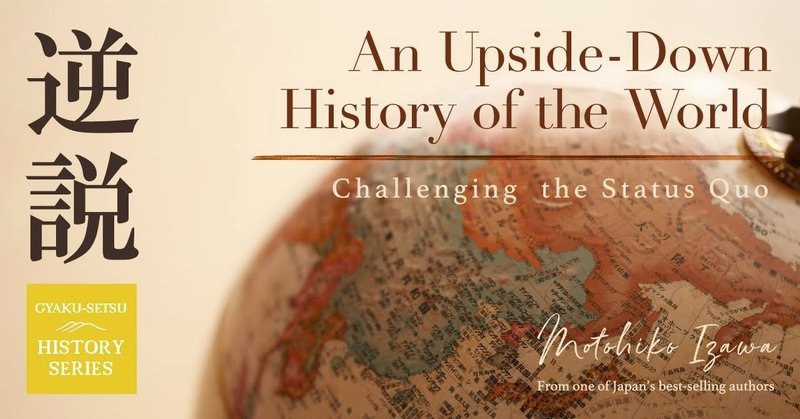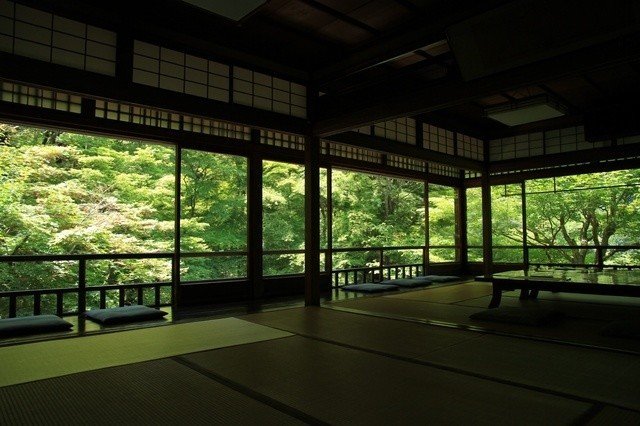
(106)Section 5: The Rise and Fall of Polytheistic Civilization II
Chapter 1: The Indus
10-1 The Monotheistic Holy War of Japanese Buddhism
Having traversed continents and the great Silk Road, the Buddhism that emerged on the lone archipelago of Japan, a veritable spiritual terminus, was a world away from that cultural jewel of the Indus. The transformation the religion had undergone was nothing short of extraordinary. Japan’s Mahayana Buddhism had come to be known as the “Mahayana of Mahayanas,” a type of moderate Buddhism that paid no attention to troublesome precepts.
The Buddhist monk and founder of Jodo Shinshu Buddhism, Shinran (1173-1262), once said “if even good people can be saved, how much more so the sinner.” (Donald W. Mitchell, Masao Abe: A Zen Life of Dialogue [Vermont: Tuttle, 1998])
As I mentioned in the previous installment, it describes man’s rebirth into the so-called paradise of the Pure Land, the perfect world of the Buddha, through the guidance of Amitabha. Rebirth in the Pure Land provides eternal liberation from the vicious cycle of samsara, along with the opportunity to be the recipient of the great Amitabha’s teachings, an opportunity, the Lotus Sutra promises, that guides all to the path of enlightenment and eventually, Buddhahood.

△ Ruriko-in temple, Komyo-ji Temple's Kyoto annex ( Jodo Shinshu Sect ) © Kei / PIXTA
In other words, as long as one is reborn into the Pure Land, becoming a buddha is essentially inevitable. To put Shinran’s words more simply, if even the virtuous are capable of attaining Buddhahood, then it is destiny for the depraved. But this is completely upside down. Conventional wisdom would reverse the phrasing. It seems much more natural to say, “if the depraved can become a Buddha, then it is all but guaranteed for the virtuous.”
So why did Shinran upend logic?
He wasn’t trying to be clever. The “virtuous” here refer to those who withdrew from the world into the intensely austere life of an ascetic without relying on the benevolence of Amitabha, much like the way Siddhartha entered the priesthood in search of the path to enlightenment. That is, those who, like the early Theravadins, aspire to become a Buddha through personal asceticism and a life of good deeds. You can see the sculptural representation of these virtuous Buddhist in japan today as the stone five hundred Arhats. A noble endeavor for sure, but the path to enlightenment through asceticism is a highly exclusive path reserved for the extremely gifted. Japanese author Ryotaro Shiba was speaking the truth when he wrote that it was a path of extreme difficulty for even the extremely capable. You can imagine the difficulty the average person would have encountered in striving toward enlightenment. The odds would have been less than one billion to one.
But when a nation’s most talented join the priesthood, thereby leaving no descendants, the nation and its people are adversely affected. Keep in mind that the sociological impact of this Buddhist phenomenon is far reaching.
This is one of the points Mahayana Buddhism sought to ameliorate. You could call it Mahayana’s rejection of monk supremacism.
In this way, Shinran thought, the depraved, or those who had the awareness that they were not virtuous, ought to adopt a certain way of thinking.

△ Statue of Shinran Shonin © minetyann / PIXTA
If you were one of the depraved, Shinran continued, you should know that, because even for the virtuous attaining Buddhahood through ascetic training is incredibly difficult, achieving the same result as a deprived individual would be completely impossible. And because ascetic training and achieving success through such training is impossible for the depraved, then the depraved must come up with a different method for attaining Buddhahood. The only way to achieve Buddhahood then is to believe in the Primal Vow of Amitabha.
So what does Amitabha say about rebirth into the Pure Land? As long as you invoke his name with the nembutsu, he guarantees you will be reborn in his paradise. This guarantee is the Fundamental Vow of Amitabha and is therefore absolute.
What this means is that, as long as one believes this wholeheartedly, that is, as long as one aspires to be reborn in the Pure Land through faith in Amitabha’s Primal Vow, one can attain Buddhahood. The result is that the depraved, by having faith in the Primal Vow—because it is always fulfilled—are in a much better place. Their buddhahood is guaranteed, unlike the virtuous and their one in one billion chance.
This is what Shinran meant by “if even good people can be saved, how much more so the sinner.” At the same time, it is a complete rejection of the path taken by Shakyamuni, Buddhism’s founder, who withdrew from society and entered the priesthood and a life of extreme ascetic training.
Shinran’s teacher, Honen, came to the conclusion of the virtuous and the depraved only after he had reached old age (some attribute the adage to Honen himself). Until then, Honen had sought Buddhahood through the solitary path of asceticism. And not surprisingly, he was pro-monastic and had never married nor had any children. But when you rethink the process of attaining enlightenment through self-reliance, i.e. asceticism, and instead focus on placing complete faith and reliance on Amitabha, the difference between the layman and the priest fades away. Before the great Buddha Amitabha, all are equal. Therefore, there was no need to maintain a precept that kept priests from marrying.
In Japanese Buddhism, lay believers are given a posthumous name or kaimyo soon after death. Long ago, it was this appellation, not one’s birth name, that was inscribed on personal tomb stones. Typically, men were given the title Koji and women Daishi, signifying the complete transition to disciple of Buddha. Becoming a true disciple of Buddha in death signaled, it was believed, the receiving of strict Buddhist law.
For followers of Amitabha, however, Buddhist law is unnecessary. It is a set of rules that monks observe. This is why Shinran’s Jodo Shinshu Buddhism refers to these posthumous names as not kaimyo but homyo. While it is not unusual for someone to receive a kaimyo such as daikoji, which is given on the basis of one’s social position during life, homyo are always presented on the pretense of equality.
Shinran was, as far as I know, the first Buddhist ever to have officially married. Of course, there have been, and perhaps always will be, priests and clergymen who have violated religious doctrine to father illegitimate children with their mistresses, and Japan’s holy men are certainly no exception. But Shinran went as far as to alter Buddhist doctrine so that not only he but his student monks as well could marry. This is why Shinran’s Jodo Shinshu headquarters, Hongan-ji, was inherited by his direct descendants and survives to this day.
Still, there were, and still are, many who wonder whether Shinran’s Jodo Shinshu can be considered Buddhism.
In Southeast Asia, the Theravada Buddhism that took root traveled a route that was altogether quite different from the Mahayana Buddhism that spread to China, the Korean Peninsula, and Japan. And not surprisingly, sexual intercourse is a serious violation of religious law for monks, a violation that could result in expulsion from the priesthood. So when many Buddhists first caught wind of modern Japanese Buddhism's approval of marriage, not just for adherents of Jodo Shinshu, but for followers of all Japanese sects, you can imagine the surprise of the Theravada devotees.
But of course, it wasn’t always that way. When Shinran became the first Buddhist in history to publically enter into marriage at the end of the twelfth century, he was lambasted by non-Jodo Shinshu believers who considered him sinful and depraved. The imperial court, headed by the emperor, went so far as to label Shinran a heretic, condemning him to life in exile. But none of this phased Shinran. Instead, he worked even harder to spread his version of the good word.
< Read the next installment August 1 >
Editor/ Noriko Knickerbocker , Aquarius Ltd.
Translator/ Matthew Hunter , Aquarius Ltd.
©Motohiko Izawa 2018-2019 All rights reserved. No reproduction or republication without written permission.
Izawa tackles for the first time the mysteries of the world in a historical journey of intrigue and cross-cultural understanding.
